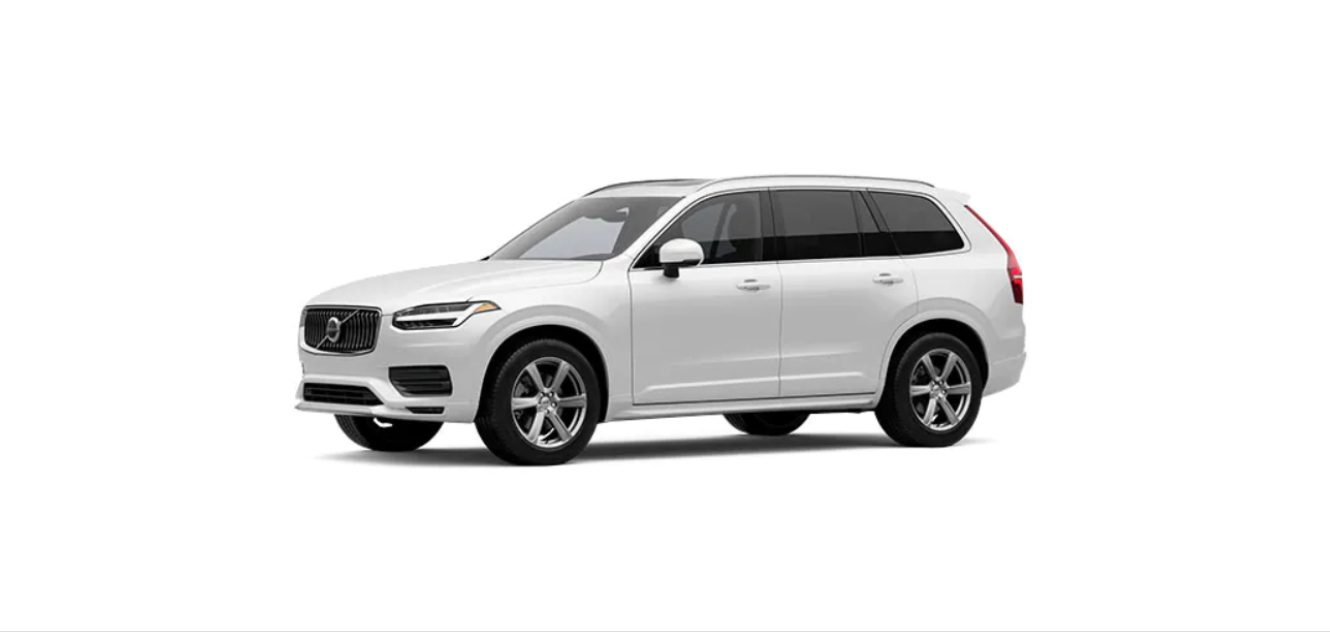2023 Volvo XC90 Recharge Plug-in Hybrid Battery
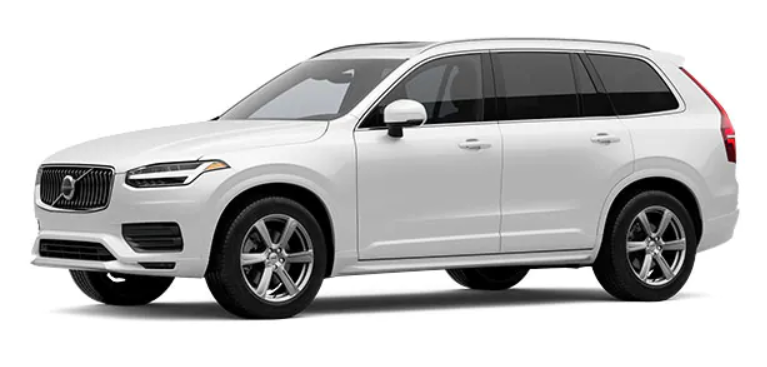
Replacing the battery in the key
The battery in the key can be replaced when it has discharged. The service life of the battery depends on how much the key is used. The Key Tag battery cannot be replaced.

- The key’s battery needs to be replaced when the information symbol is illuminated and the car key battery is low. See Owner’s Manual for replacement. the message is shown in the driver display.
- Another sign that the battery level is low is decreased range for the key.
- The battery in the Key tag (Key Tag) cannot be replaced. When the battery is discharged, a new Key tag can be ordered from an authorized Volvo workshop.
Opening the key and changing its battery
Avoid touching the contact surfaces of a new battery with your fingers. This impairs the battery’s functionality.
Hold the key so that its front with the Volvo logotype is facing up, and with the keyring bracket facing you.
There is a catch on the left of the keyring bracket. If it is on the wrong side then the front and rear have been mixed up when the battery was replaced on an earlier occasion.
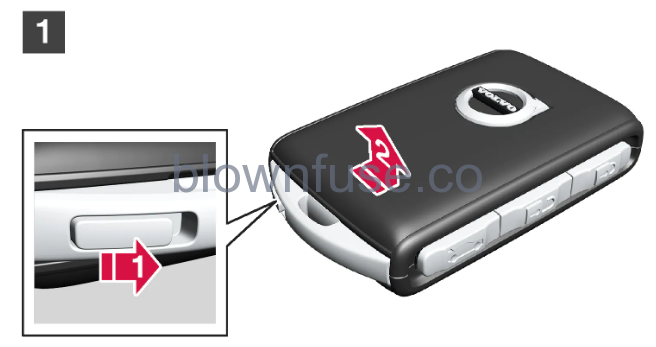
Slide the catch by the keyring bracket to the side, and slide the front shell away from the bracket.
The shell detaches and can be lifted off.
There is a further catch under the shell to detach the rear.
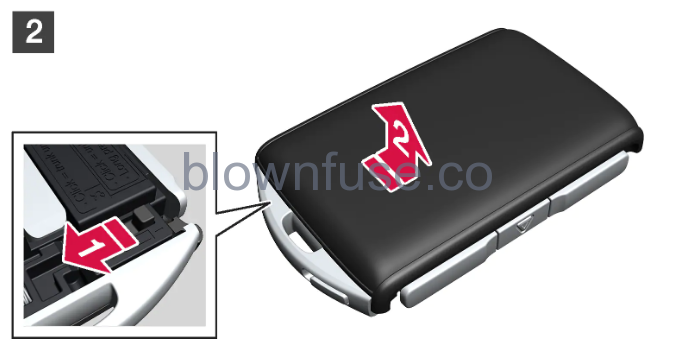
Slide the catch that was behind the front shell to the side, and slide the rear shell away from the key ring bracket.
The shell detaches and can be lifted off.
The battery cover is under the shell.
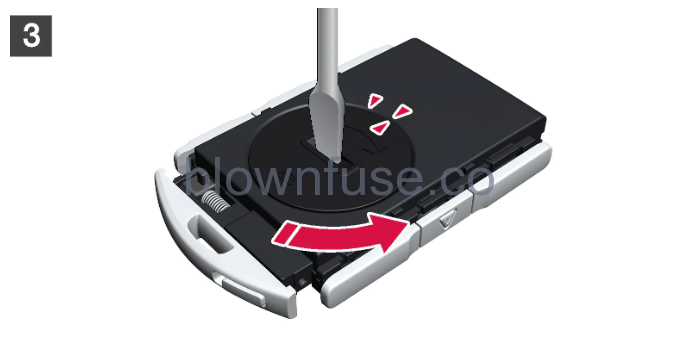
Turn the battery cover anticlockwise to OPEN position. Use a screwdriver or a coin, for example.
Lift off the battery cover. If it is difficult to detach, you can prize it upward using a narrow tool.
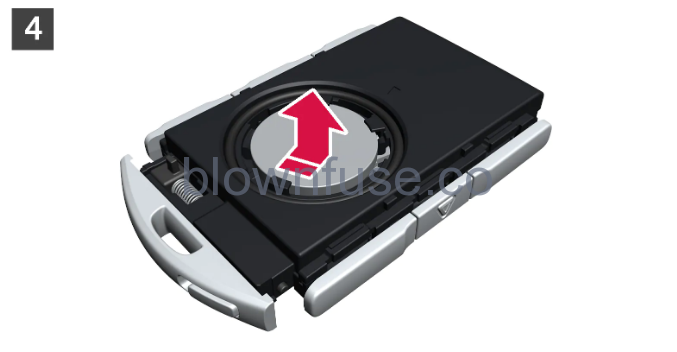
The battery (+) side is facing upwards. Loosen the battery by pressing on its edge and then lifting it out.
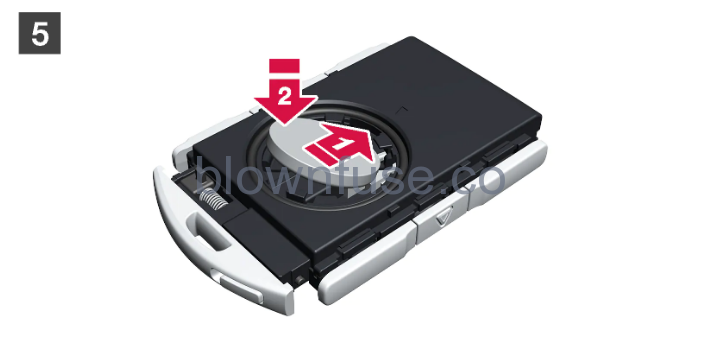
Install a new battery with the (+) side up. Avoid touching the key’s battery contacts with your fingers.
Position the edge of the battery under the two outer plastic catches.
Then press down on the battery so that it is held in place by the upper plastic catch.
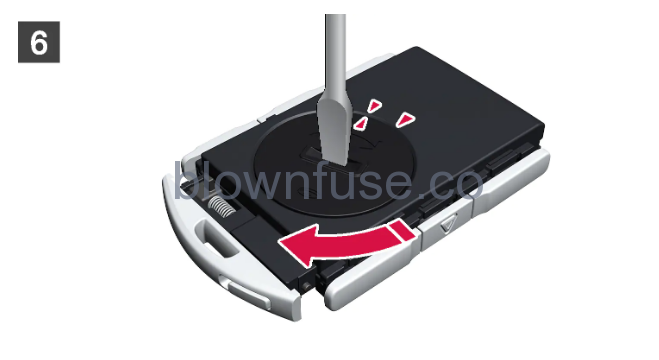
Refit the battery cover and turn clockwise to CLOSE position.
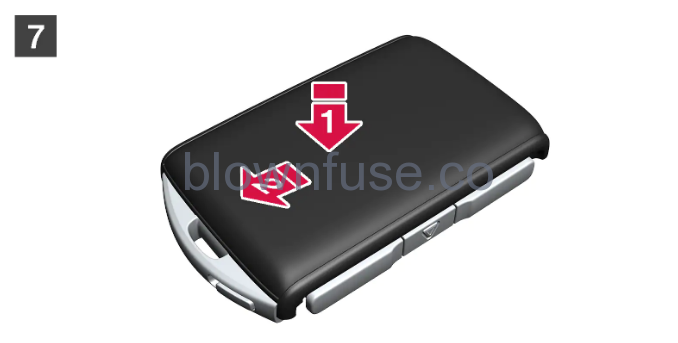
Refit the rear shell in reverse order to how it was removed. There is no logotype on the rear shell. Press in the shell until you hear a click, and then slide it the last few millimetres to its original position.
A further click will indicate that the shell is properly positioned and securely attached.
There must be no gaps remaining.
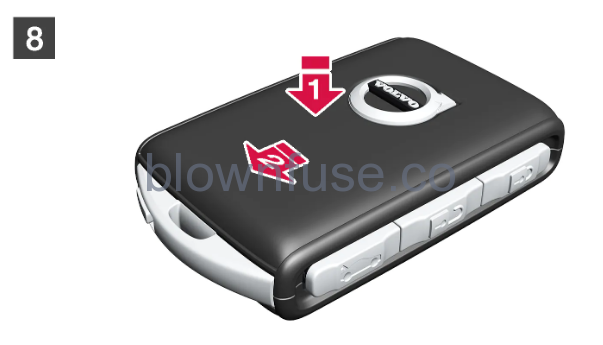
Turn the key and refit the front shell in the same way as for the rear.
Check that the battery is fitted correctly with the correct polarity. If the key shall not be used for a long time, remove the battery to avoid battery leakage and damage. Batteries with damaged or leaks may cause corrosive injury on contact with the skin. Therefore, use protective gloves when handling damaged batteries.
- Keep batteries out of the reach of children.
- Do not leave batteries lying around since they can be swallowed by children or pets.
- Batteries must not: be dismantled, short-circuited or thrown into open flames.
- Do not try to charge non-rechargeable batteries. They may explode.
- Check battery-operated products for signs of damage on a regular basis.
The key should not be used if anything indicates that the key or its battery has been damaged or has started to leak. Keep defective products out of the reach of children.
Recommendations for hybrid battery
Some circumstances may lead to damage to the hybrid battery and shorten its service life. The recommendations are designed for long service life for the hybrid battery and good performance while driving.
Check the state of charge (SoC) in the driver display on a regular basis.
- If the State Of Charge (SOC) is higher – drive the car until it reaches the recommended level.
- If the State Of Charge (SOC) is lower – charge the car to the recommended level.
Low State Of Charge (SOC)
Parking in a hot climate
Avoid exposing the car to extreme temperatures. If there is a risk of temperatures around 55 °C (131 °F) then parking for longer than 24 hours should be completely avoided in order to avoid serious damage to the battery.
Overloading the starter battery
High power consumption without the car being able to charge the starter battery leads to low battery level and some electric functions being reduced or switched off. If the battery level decreases to below a certain limit, it is no longer possible to start the car without jump starting or charging the starter battery with an external charger.
There are several measures that reduce power consumption. Avoid using the ignition position II when the car is switched off. Instead, use ignition position I – which consumes less power. Do not use functions that use a lot of power when the car is not being driven. Examples of such functions are:
- ventilation fan
- headlamps
- windscreen wiper
- audio system
- accessories that are activated in the car.
If the battery level is low, a message is shown in the driver display. The energy-saving function then shuts down certain functions or reduces certain functions such as the ventilation fan and audio system.
In which case, charge the starter battery by starting the car and then running it for at least 15 minutes. Starter battery charging is more effective during driving than running at idling speed.
If the battery level continues to be low after the measures have been taken, the car should be checked at a workshop – an authorized Volvo workshop is recommended.
Using jump starting with another battery
If the car’s starter battery (12 V) is discharged then the car’s electrical system can be started with current from another battery.
If the battery with a voltage of 12 V (starter battery) is discharged, the car’s electrical system can be started by means of jump-starting using jump leads and another car. If the hybrid battery is also discharged, it will need to be charged using a charging cable after starting the electrical system in order to be able to start the engine.
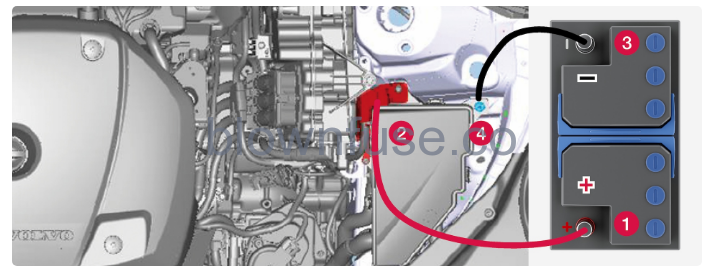 Charging points for jump-starting own car. The appearance in the engine compartment may vary depending on car model and equipment level.
Charging points for jump-starting own car. The appearance in the engine compartment may vary depending on car model and equipment level.
ImportantThe car’s charging points are only intended for jump-starting the car itself. Do not use them to start other cars – the fuse for the charging circuit may be overloaded so that it stops working.
If a fuse has been overloaded, the message 12 V battery fuse failure Service required is shown in the driver display. Volvo recommends that an authorized Volvo workshop is contacted.
When jump-starting the car, the following steps are recommended to avoid short circuits or other damage:
- Set the car’s electrical system in ignition position 0.
- Check that the donor battery has a voltage of 12 V.
- If the battery is installed in another car – switch off its engine and make sure that the cars do not touch each other.
- Connect one of the red jump lead clamps to the donor battery’s positive terminal (1).
Important
Connect the jump lead carefully to avoid a short circuit and contact with other components in the engine compartment. - Open the positive charging point’s cover (2).
- Attach the red jump lead’s other clamp onto the car’s positive charging point (2).
- Connect one of the black jump lead’s clamps to the donor battery’s negative terminal (3).
- Attach the black jump lead’s other clamp onto the car’s negative charging point (4).
- Check that the jump lead clamps are affixed securely. Poor contact may cause sparks or the clamps to loosen during the starting attempt.
- Start the engine of the donor car and allow it to run for a few minutes at a rotation speed higher than normal idle approx. 1500 rpm.
- Start your own car’s engine. If the start attempt fails then extend the charging time to 10 minutes, and then make a new start attempt.
Important
- Do not touch the connections between cable and car during the starting attempt. There is a risk of sparks forming.
- Remove the jump leads in reverse order – first the black and then the red.
- Make sure that the black jump lead’s clamps do not come into contact with the car’s positive charging point, the donor battery’s positive terminal, or the clamp connected to the red jump lead.
Warning
- The battery can generate oxyhydrogen gas, which is highly explosive. A spark can be formed if a jump lead is connected incorrectly, and this can be enough for the battery to explode.
- Do not connect the jump leads to any fuel system component or any moving part. Be careful of hot engine parts.
- The battery contains sulphuric acid, which can cause serious burns.
- If sulphuric acid comes into contact with eyes, skin or clothing, flush with large quantities of water. If acid splashes into the eyes – seek medical attention immediately.
- Never smoke near the battery.
Batteries and power supply
The car’s own power supply is connected to several different batteries and components. These make it possible to use the car’s electrical functions.
- The car’s primary electrical system operates with 12 V voltage and powers electrical equipment.
- In addition to the primary electrical system, the car has a high voltage system for electrical propulsion.
BatteriesIn order to supply power to the various components, your car is equipped with the following:
- a 12 V starter battery that powers the car’s primary electrical system
- a hybrid battery for the electrical propulsion of the car.
Recycling the batteries
Used batteries must be recycled in an environmentally sound manner.
- Consult a workshop in the event of uncertainty about how this type of waste should be discarded – an authorized Volvo workshop is recommended. The hybrid battery must only be handled by authorized workshop personnel.
Symbols on the batteries
There are information and warning symbols on the batteries.
| Use protective goggles. | |
| Further information in the owner’s manual for the car. | |
| Store the battery out of the reach of children. | |
| The battery contains corrosive acid. | |
| Avoid sparks and naked flames. | |
| Risk of explosion. | |
| Must be taken for recycling. |
Hybrid battery
The hybrid battery powers the car’s electric motor and is charged via the car’s charging input socket.
- In addition to electric drive, the hybrid battery is used to start the internal combustion engine. Therefore, the car cannot be started if the battery is fully discharged for some reason. In order to charge the hybrid battery, the car’s smaller 12 V battery needs to be sufficiently charged in order to have the capacity to power the car’s electrical system and start charging.
The hybrid battery’s cooling system has a separate expansion tank.
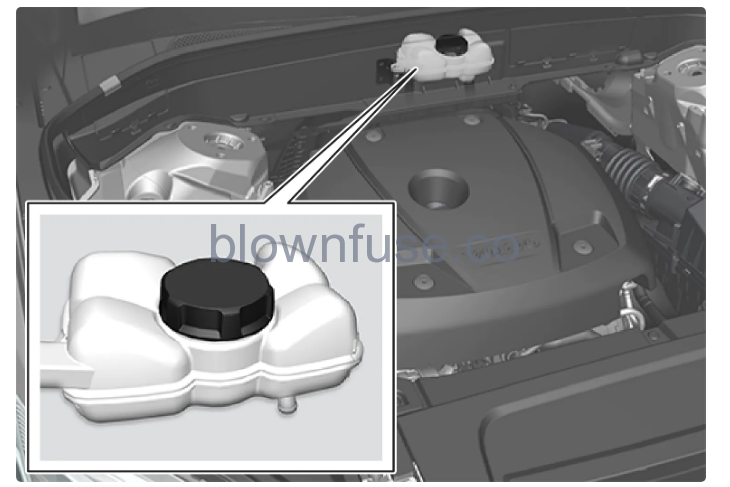
Specifications for hybrid battery
- Type: Lithium-ion
- Total amount of energy: 18.8 kWh
Starter battery
The starter battery powers the car’s primary electrical system, which includes most of the electrical equipment. The hybrid battery is used for starting the internal combustion engine.
The starter battery is a 12 V battery that is dimensioned to power the car model’s specific electrical system and functions.
- Never disconnect the starter battery when the engine is running.
- Check that the cables to the starter battery are correctly connected and properly tightened.
Warning
- The battery can generate oxyhydrogen gas, which is highly explosive. A spark can be formed if a jump lead is connected incorrectly, and this can be enough for the battery to explode.
- Do not connect the jump leads to any fuel system component or any moving part. Be careful of hot engine parts.
- The battery contains sulphuric acid, which can cause serious burns.
- If sulphuric acid comes into contact with eyes, skin or clothing, flush with large quantities of water. If acid splashes into the eyes – seek medical attention immediately.
- Never smoke near the battery.
The service life and capacity of the starter battery
- The service life of the starter battery is influenced by a number of factors, such as the number of starts, discharges, driving style, driving conditions, and climate conditions. The battery’s starting capacity gradually decreases over time. Extreme cold further limits starting capacity.
- The battery level may become low if the car is not used for any length of time or if it only travels short distances.
- To keep the starter battery in good condition, at least 15 minutes of driving a week is recommended or connecting the battery to a battery charger with automatic trickle charging. A starter battery that is kept fully charged has a maximum service life.
Location
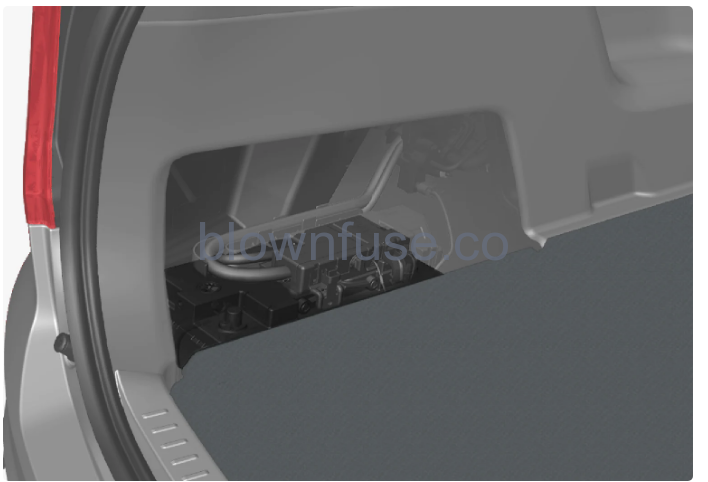 The starter battery is located in the cargo area.
The starter battery is located in the cargo area.
Specifications for starter battery
| Battery type | H8 AGM |
|---|---|
| Voltage (V) | 12 |
| Cold start capacity – CCA (A) | 850 |
| Size, L×B×H | 353×175×190 mm (13.9×6.9×7.5 inches) |
| Capacity (Ah) | 95 |
